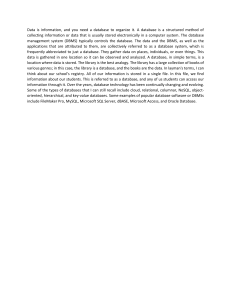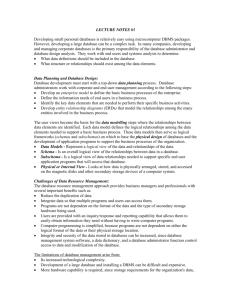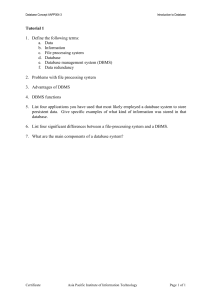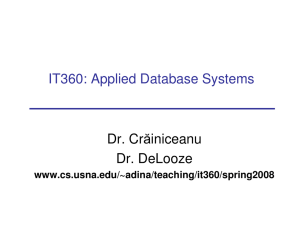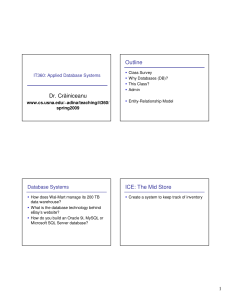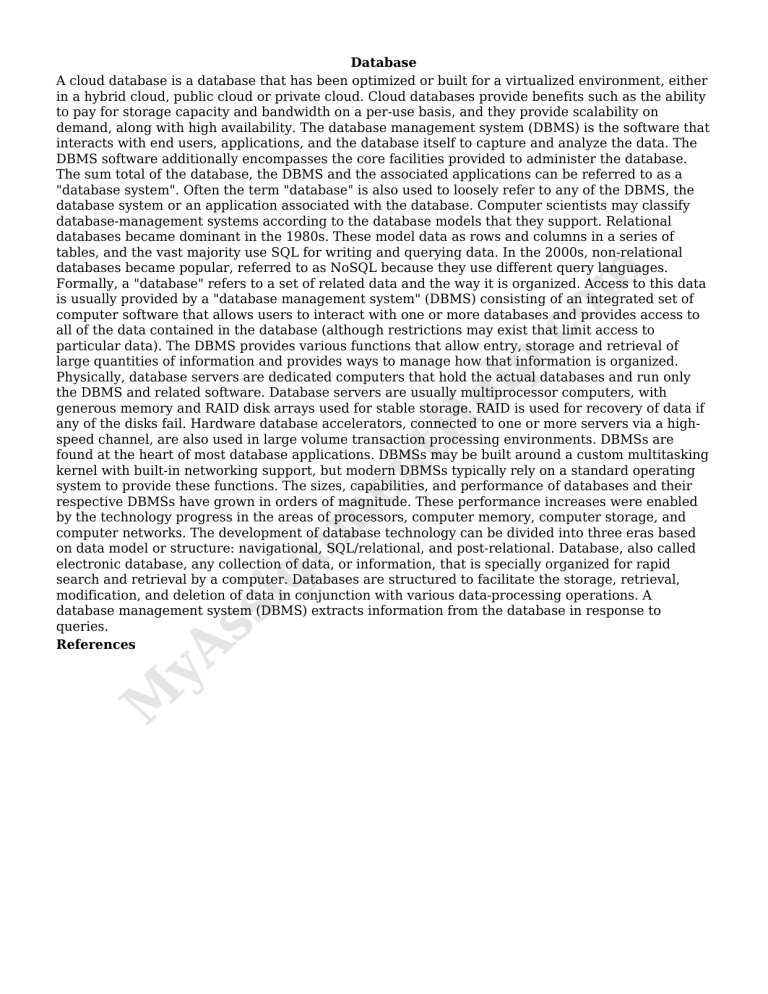
M yA ss ig nm en t H el p. c om Database A cloud database is a database that has been optimized or built for a virtualized environment, either in a hybrid cloud, public cloud or private cloud. Cloud databases provide benefits such as the ability to pay for storage capacity and bandwidth on a per-use basis, and they provide scalability on demand, along with high availability. The database management system (DBMS) is the software that interacts with end users, applications, and the database itself to capture and analyze the data. The DBMS software additionally encompasses the core facilities provided to administer the database. The sum total of the database, the DBMS and the associated applications can be referred to as a "database system". Often the term "database" is also used to loosely refer to any of the DBMS, the database system or an application associated with the database. Computer scientists may classify database-management systems according to the database models that they support. Relational databases became dominant in the 1980s. These model data as rows and columns in a series of tables, and the vast majority use SQL for writing and querying data. In the 2000s, non-relational databases became popular, referred to as NoSQL because they use different query languages. Formally, a "database" refers to a set of related data and the way it is organized. Access to this data is usually provided by a "database management system" (DBMS) consisting of an integrated set of computer software that allows users to interact with one or more databases and provides access to all of the data contained in the database (although restrictions may exist that limit access to particular data). The DBMS provides various functions that allow entry, storage and retrieval of large quantities of information and provides ways to manage how that information is organized. Physically, database servers are dedicated computers that hold the actual databases and run only the DBMS and related software. Database servers are usually multiprocessor computers, with generous memory and RAID disk arrays used for stable storage. RAID is used for recovery of data if any of the disks fail. Hardware database accelerators, connected to one or more servers via a highspeed channel, are also used in large volume transaction processing environments. DBMSs are found at the heart of most database applications. DBMSs may be built around a custom multitasking kernel with built-in networking support, but modern DBMSs typically rely on a standard operating system to provide these functions. The sizes, capabilities, and performance of databases and their respective DBMSs have grown in orders of magnitude. These performance increases were enabled by the technology progress in the areas of processors, computer memory, computer storage, and computer networks. The development of database technology can be divided into three eras based on data model or structure: navigational, SQL/relational, and post-relational. Database, also called electronic database, any collection of data, or information, that is specially organized for rapid search and retrieval by a computer. Databases are structured to facilitate the storage, retrieval, modification, and deletion of data in conjunction with various data-processing operations. A database management system (DBMS) extracts information from the database in response to queries. References
